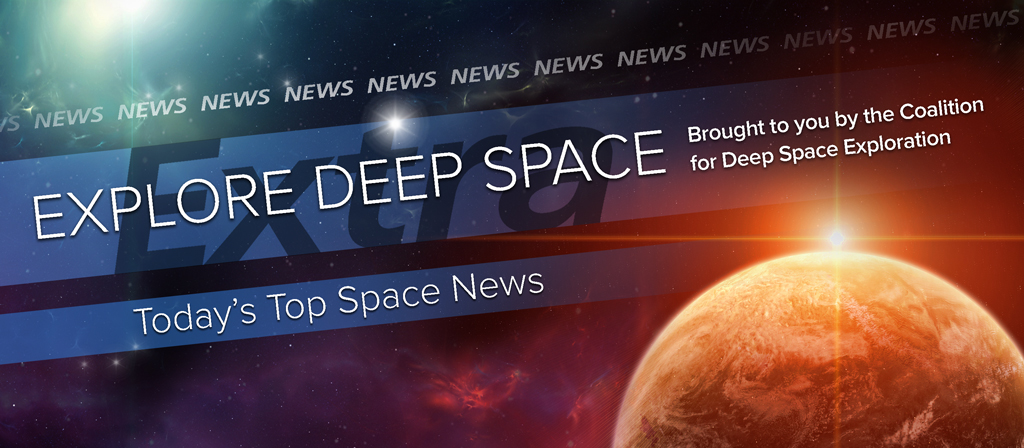In Today’s Deep Space Extra… Lunar orbit may be just the place to test a NASA habitat developed to house astronauts on future missions to asteroids and Mars.
Human Deep Space Exploration
Plans being devised for human outpost near the moon
Space.com (2/23): A NASA outpost placed in lunar orbit could be a step for efforts to launch human explorers to near Earth asteroids and Mars. NASA’s Space Launch System exploration rocket and the Orion capsule would provide transportation to a prototype in space habitat.
CT-2 completes Super Crawler modifications for SLS program
NASAspaceflight.com (2/23): At NASA’s Kennedy Space Center, Crawler Transporter-2, with a heritage reaching back to the 1960s, has been upgraded to move the Space Launch System exploration rocket from its assembly building to the launch pad. The SLS is in development to start future astronauts on missions of deep space exploration. Validations tests of the crawler transporter are set to begin at the end of March.
Space Science
How friendly is Enceladus’ ocean to life?
Space.com (2/23): Researchers probe the pH chemistry of water spraying from Jupiter’s ice and ocean covered moon Enceladus. The efforts is part of a wider effort to determine whether the outer solar system world harbors a habitable environment.
Dizzying final few months planned for Rosetta comet probe
Spaceflightnow.com (2/23): The European Space Agency’s Rosetta spacecraft has been flying close to the comet 67P/Churyumov-Gerasimenko since 2014. In late September, as a long running mission draws to a close, Rosetta will swoop close to the surface of the comet, then to a controlled crash landing. Comet 67P made its closed approach to the sun in August.
Search narrows for Planet Nine along sprawling orbit of thousands of years
AFP, via The Guardian (2/23): Earlier this year, U.S. astronomers pointed to evidence for an undiscovered planet beyond Neptune, referred to as Planet Nine. Now, French astronomers say they have used data from the multinational Cassini mission orbiting Saturn to narrow the region where the planet might be lurking.
Large-ish meteor hits Earth… but no one notices
Discovery.com (2/23): A meteor, perhaps 16 to 23 feet wide, dove into the Earth’s atmosphere on Feb. 9, with a little noticed explosion. NASA’s Near Earth Asteroid Program, however, logged the event over the South Atlantic Ocean.
Low Earth Orbit
What happens when an astronaut returns from a year in space?
Christian Science Monitor (2/23): U.S. astronaut Scott Kelly and Russia’s Mikhail Kornienko are about to find out as they descend to Earth late Mar. 1, after 340 days aboard the International Space Station. No NASA astronaut has been in space so long. Both men must readjust to gravity to overcome bodily changes that accompany lengthy exposures to weightlessness. Experts will be watching and helping in order to learn how their responses to months in space may affect plans for future human deep space missions.
Commercial to Low Earth Orbit
NASA, Made in Space think big with Archinaut, a robotic 3-D printing demo bound for ISS
Space News (2/23): Commercial 3-D printing pioneer Made in Space, and others, envision an advanced printer aboard the International Space Station equipped with a robot arm to produce communications satellite components. NASA is investing $20 million over two years in the effort with Made in Space, Northrop Grumman and Oceaneering Space Systems to produce the device known as Archinaut.
Space startup investments skyrocketed last year
R & D (2/22): Aerospace consultants the Tauri Group report that 50 venture capital groups invested $1.8 billion in commercial space startups in 2015. Tauri characterized the figure as “staggering.”
Suborbital
Former NASA astronaut joins World View as chief pilot
Space News (2/23): Ron Garan, former NASA astronaut and U.S. Air Force test pilot, has joined World View, of Tucson, to lead flight operations for the company’s commercial high altitude balloon missions for tourists and researchers. Flights that offer passengers a view of the Earth’s curvature are planned to begin in 2017. As a NASA space station astronaut, Garan championed the space flight experience as an important foundation for global cooperation.

